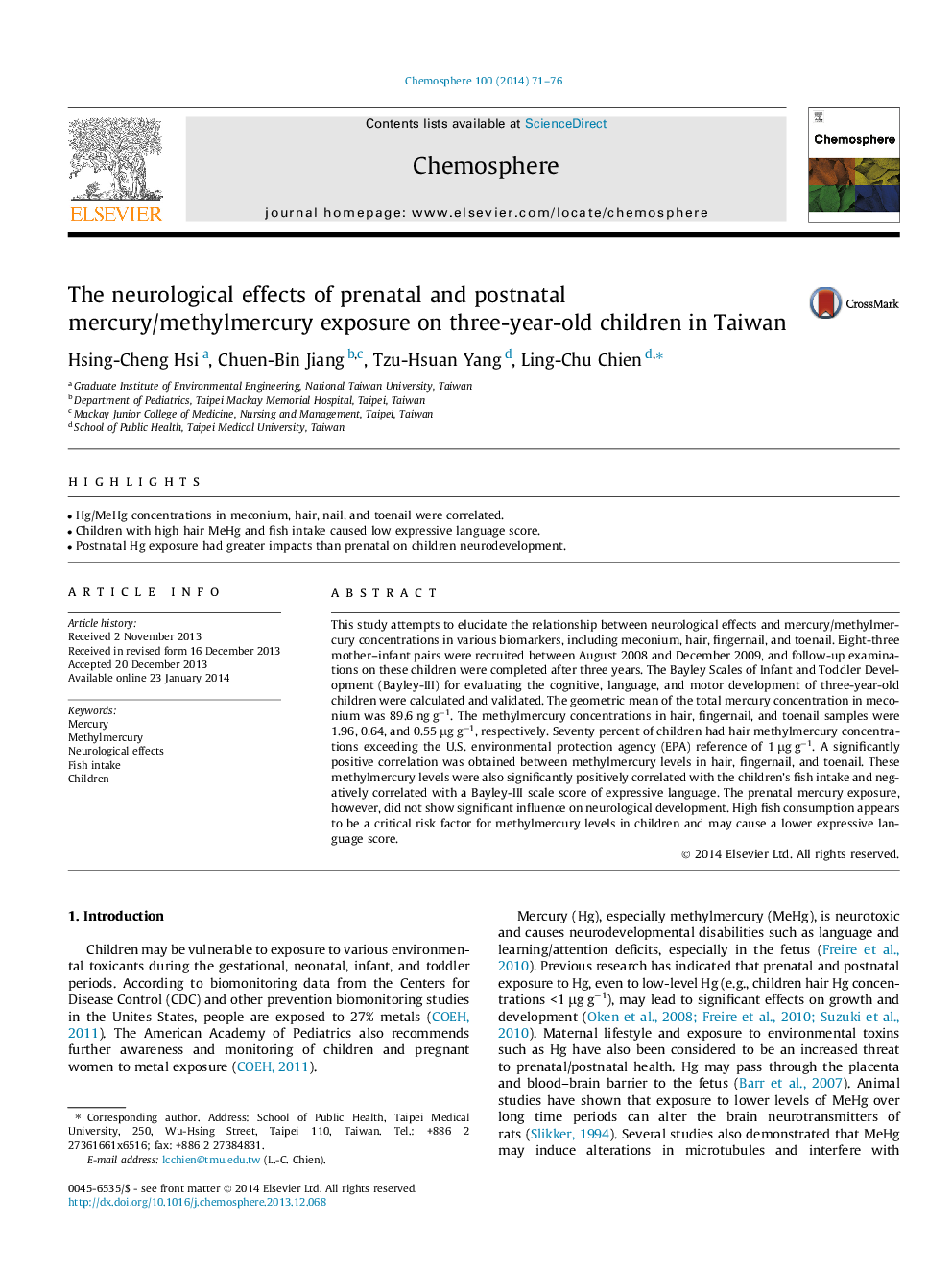| Article ID | Journal | Published Year | Pages | File Type |
|---|---|---|---|---|
| 6309457 | Chemosphere | 2014 | 6 Pages |
Abstract
This study attempts to elucidate the relationship between neurological effects and mercury/methylmercury concentrations in various biomarkers, including meconium, hair, fingernail, and toenail. Eight-three mother-infant pairs were recruited between August 2008 and December 2009, and follow-up examinations on these children were completed after three years. The Bayley Scales of Infant and Toddler Development (Bayley-III) for evaluating the cognitive, language, and motor development of three-year-old children were calculated and validated. The geometric mean of the total mercury concentration in meconium was 89.6 ng gâ1. The methylmercury concentrations in hair, fingernail, and toenail samples were 1.96, 0.64, and 0.55 μg gâ1, respectively. Seventy percent of children had hair methylmercury concentrations exceeding the U.S. environmental protection agency (EPA) reference of 1 μg gâ1. A significantly positive correlation was obtained between methylmercury levels in hair, fingernail, and toenail. These methylmercury levels were also significantly positively correlated with the children's fish intake and negatively correlated with a Bayley-III scale score of expressive language. The prenatal mercury exposure, however, did not show significant influence on neurological development. High fish consumption appears to be a critical risk factor for methylmercury levels in children and may cause a lower expressive language score.
Related Topics
Life Sciences
Environmental Science
Environmental Chemistry
Authors
Hsing-Cheng Hsi, Chuen-Bin Jiang, Tzu-Hsuan Yang, Ling-Chu Chien,
